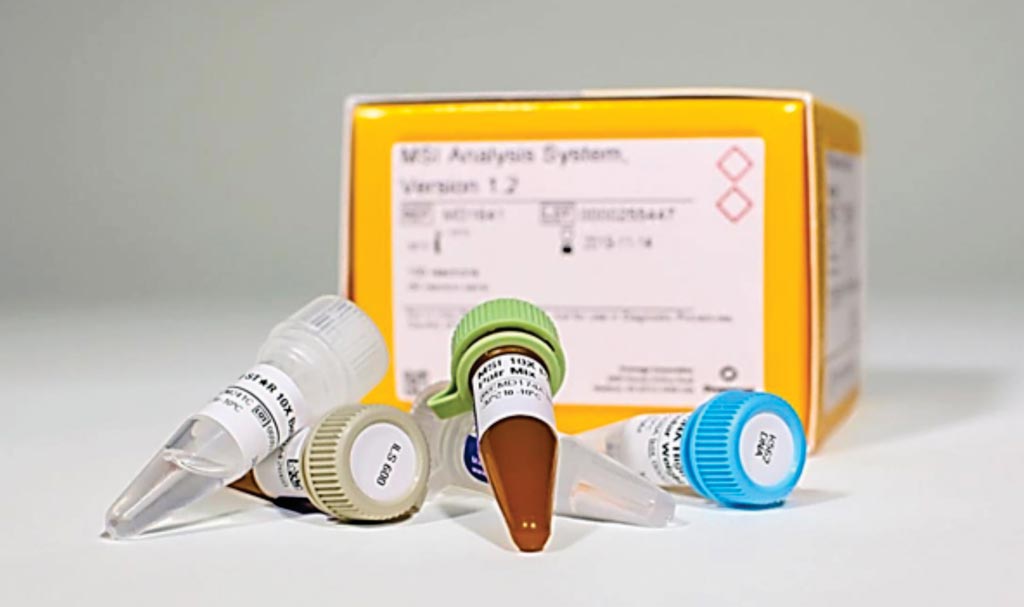Molecular Subtype Identified for CRCs Metastasized to Liver
By LabMedica International staff writers
Posted on 17 May 2018
Metastases are the leading cause of cancer-related deaths and frequently are widely disseminated, which has led to the prevailing view that metastases are always widespread.Posted on 17 May 2018
A form of colorectal cancer (CRC) forming a localized metastatic tumor in the liver, that is highly treatable, has been identified. Patients with limited liver metastases from CRC have been consistently demonstrated to achieve prolonged survival after hepatic resection and provide an opportunity to investigate the molecular basis for oligometastasis.

Image: The MSI Analysis System, Version 1.2, is a fluorescent multiplex PCR-based method to detect microsatellite instability (MSI), a form of genomic instability (Photo courtesy of Promega).
An integrated team of scientists from the University of Chicago (Chicago, IL, USA) used a combination of RNA sequencing, targeted panel sequencing, microRNA analyses, and/or microsatellite instability assays, to profile samples from as many as 121 individuals with liver metastases stemming from primary CRC. Along with Affymetrix array-based miRNA profiling on 116 samples, they used HiSeq instruments to perform transcriptome sequencing on 95 metastatic tumors.
The team added OncoPlus panel sequencing on matched tumor and normal samples from 59 of the cases, and used Promega MSI 1.2 clinical assays to assess microsatellite instability patterns in 89 of the metastatic tumor samples. The subset tumor classification strategy was informed by available CRC genomic data generated for efforts such as the Cancer Genome Atlas.
The investigators identified three molecular subtypes for the CRC metastases in the liver, including a form of oligometastatic disease that coincided with better overall survival times. A subset of more favorable CRC liver metastasis cases showed "microsatellite instability-independent" activation of interferon and other immune signaling pathways, paired with mutations in genes such as NRAS, CDK12, and EBF1. The team reported, while an intermediate tumor subtype had VEGFA amplifications in combination with NOTCH1 mutations, PIK3C2B mutations, and E2F/MYC pathway activation, a molecular profile dubbed "canonical." Riskier, "stromal" CRC liver metastatic tumors contained VEGFA amplifications coupled with stromal, mesenchymal, and angiogenic molecular signatures.
The team noted that individuals with favorable or intermediate tumor types and low clinical risk scores appeared to have 10-year average survival rates of 94%. In contrast, 45% of individuals survived for 10 years when their metastases fell in the intermediate canonical subtype and had high clinical risk scores or belonged to the unfavorable stromal tumor subtypes with low clinical risk. The 10-year survival rates were even more dire, just 19% for cases with stromal CRC liver metastases paired with high clinical risk scores. The study was published on May 4, 2018, in the journal Nature Communications.
Related Links:
University of Chicago














